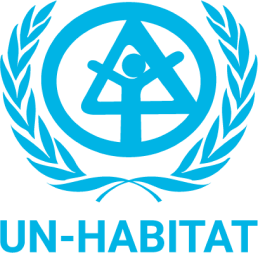Background
During the 2018 monsoon season, tropical storm SON-TINH caused heavy flooding from the Sepa-Nam Noi in Attapeu province in Laos PDR. The floods affected 62,317 households in five provinces of Cambodia downstream along the Mekong river and caused the death of 16 people, and at the height of the floods, some 5,398 households were forced to evacuate their homes. In Cambodia, the most affected area in terms of the number of families evacuated was Tbong Khmom District (2,148 households) and none of the evacuees had received shelter kits in the aftermath of the hazard. Against this backdrop, UN-Habitat hand-in-hand with the Royal Government of Cambodia launched the “Project for the Support for Improving Living Environment and Prevention Capacity in Cambodia” in April 2019 with the fund from the Government of Japan.
Objectives
The 12-month project aimed to achieve recovery and strengthened resilience of the flood affected population by ensuring access to safe and resilient shelter to people in displacement areas and/or to households with destroyed shelter, including disaster preparedness measures, in Cambodia. Based on UN-Habitat’s expertise and experience in post-disaster recovery in Asia and the Pacific region, the project was implemented taking the People’s Process approach, a community-driven rebuilding approach which trains members of households whose homes were destroyed to rebuild their homes and communities.
Activities
The project was broken down into the following 10 activities:
- Project preparation
- Conduct a field recovery assessment, select community organizations and involve all relevant actors
- Conduct detailed mapping of shelter needs and safe areas (flood maps) in target communes
- Reach consensus with communities and flood-affected families on which households to be assisted
- Identify low-cost and local materials that can be used to construct resilient houses
- Select construction workers and train them on disaster resilient construction methods
- Community mobilization for housing construction and repair
- Design and construct resilient houses using low-cost and local materials
- Integrate DRR elements into local plans
- Conduct a workshop on lessons learned and disseminate the results at national level
Results
The project supported the following direct and indirect beneficiaries through its activities:
- A total of 202 households with 1,098 people have been supported with core shelters (i.e., houses reconstructed for 104 households with 614 people and houses repaired for 98 households with 484 people). Climate resilience was adapted in housing design and construction methods in rural settings, particularly targeting a disaster-prone area in Cambodia.
- Approximately 10,000 people have received benefit from a wide range of the project activities related to reinforcement of disaster preparedness (e.g., creation of the hazard maps, community development support, livelihood assistance, WASH training, skills development training).
- 172 carpenters and construction workers in the flood-affected area have been trained on resilient construction methods and have acquired new skills and knowledge about building resilient and affordable houses which is useful for replicating good practices in the future.
- 70 national and subnational government officials have received benefit from a series of the capacity building opportunities on policy development, disaster preparedness, and disaster management and learned how to integrate DRR elements into local planning, i.e. a Commune Investment Plan (CIP).
- Aside from 202 households as direct beneficiaries, additional 14 households with 86 people in 5 communities have received benefits of installing new 14 latrines in their existing houses.
Donors and Key Project Stakeholders
Donor:
Government of Japan
Key Project Stakeholders:
The General Department of Housing (GDH), the Ministry of Land Management, Urban Planning, and Construction (MLMUPC); Tbong Khmom Province; Tbong Khmom District; Relevant Communes and Villages to which the target communities belong
Relevant Links
Video: Project for Improving Living Environment and Disaster Prevention Capacity in Cambodia








